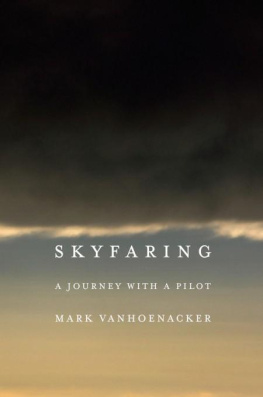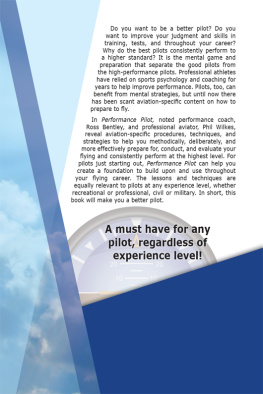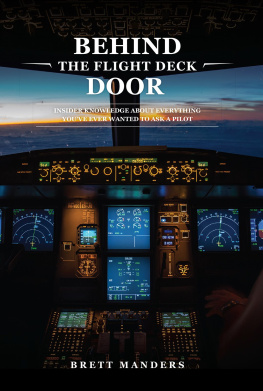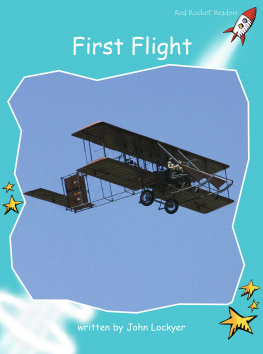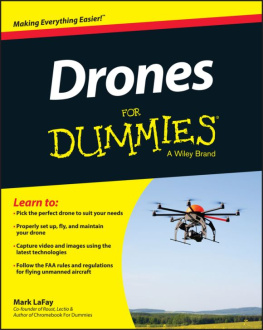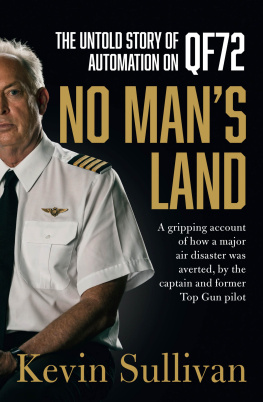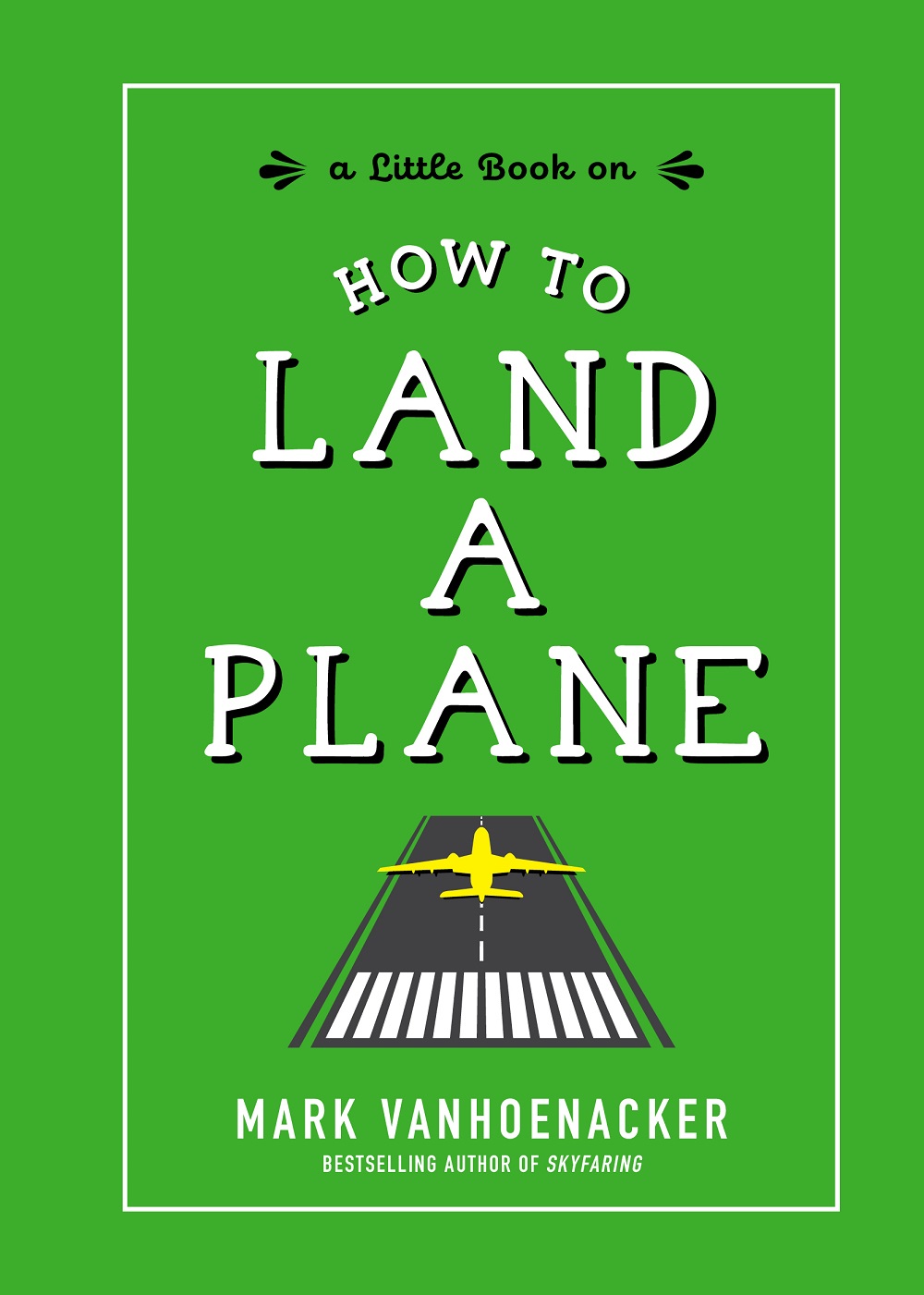
Introduction
I spent a lot of my childhood dreaming of becoming a pilot. I saved my money to buy model airplanes, I begged my parents to take me to air shows, and whenever we flew somewhere on vacation I pressed my nose to the window with an ever-firmer love of flight.
Today Im a 44-year-old pilot who flies the Boeing 787 Dreamliner. On most workdays (and work nights) I still carry a bit of that childhood joy with me across continents and oceans, above the most beautiful formations of cloud and the gathered lights of cities, under more stars than I could ever have imagined I would see.
Like many pilots, flight attendants and devoted fans of the window seat, my love for flying feels simultaneously planet-sized and deeply personal. In flight we move like mere dots through the new immensity of the sky, we see our homes so small and far below us on the unfamiliar enormity of the earth, and yet even as flying makes us feel so tiny, it uplifts us. What else does that? Im never surprised when I hear people describe flying as an almost religious experience, nor when I encounter wings and elevated perspectives in sacred images and stories that far predate the Wright brothers.
For those of us who love flying, and who want to share what we love, I think its important to describe flight in such high-reaching terms. At least sometimes. Otherwise, whether as pilots or as passengers, we might forget how humbling and inspiring flight can be.
But theres another way to think about the wonder of flight.
We might briefly, and perhaps counterintuitively, set aside all that soaring language (of which Exhibit A is surely the word soaring itself).
We might instead approach flight through its most impersonal and mundane details, where God (or the devil, depending on which version of the expression were partial to) is said to reside. We might remind ourselves that airplanes, like delivery vans and supertankers and lawnmowers, are machines that people design, build, and drive across the world for almost entirely practical purposes.
Reencountering the airplane as just a machine reminds us that flying, however remarkable, is just a skilla set of skills, to be precise, that are taught, tested, and regulated like any other (albeit far more rigorously than most). These skills are challenging, certainly, but they are not romantic. On the contrary, theyre unusually down-to-earth. Many remain stubbornly physical, even in the most computerized modern airliner. Yet its from these skills that the transcendence of flight is dutifully and safely assembled, many thousands of times each day.
In this short volume, Id like to describe some of these skillsspecifically, those needed to land a plane.
Why focus on the landing? While its true that takeoffs are great funthey benefit from the exhilaration, and the acceleration, that accompany any great beginninglandings offer more opportunities to describe a number of different skills that pilots need. Most pilots would agree that landing is more challenging than taking off, and its arguably a more useful talent (no one has to take off, after all).
Its also the case that landings, at least to me, are more momentous than takeoffs. I find thats especially true when Im flying as a passenger. I love to listen to music while in the window seat, and, for as long as I can remember, its been the landing that has demanded the best song. A landing is nothing less than how we move from the skies of our planet to its surface. Its how we (a flying species at last) come home.
But I promised to set aside the lofty words, didnt I? And anyway, its almost time for you to take the controls.
Close your eyes, then, and imagine a plane high in the blue. Any plane at all.
You are going to land this plane. I hope that youll enjoy doing so. I hope, too, that the experience will leave you with a new understanding of flight, and of why so many pilotsmyself includedbelieve that we really do have the best job on Earth.
Before we start, a few caveats. My goal in these pages is to guide you on a flight of imaginationone thats as technically accurate as possible. Needless to say, however, this book cannot substitute in any way for professional flight training. I do not intend to be taken literally, wrote Squadron Leader Nigel Tangye about the title of his classic 1938 text, Teach Yourself to Fly. Instead I encourageas Squadron Leader Tangye didany sufficiently interested reader to hurry to their nearest airport, where your baptism of the air may be attained for as little as five shillings (a figure that only a killjoy would adjust for inflation).
The main reason that no book can substitute for professional flight training, of course, is that flying is a physical skill you can only learn in an actual airplane, in the sky, with a steely-eyed instructor sitting next to you.
Another, less appreciated reason is that planes differ vastly from one another. Certain principles apply to all aircraft, of course. Theres a beauty to these universals, and they are the perfect window onto both how flight works and why its so amazing. Beyond these, though, even the more general systems and procedures that I describe wont cover all aircraft.
On the subject of beauty, the aircraft Im going to refer to most often in these pages is the Boeing 747. The most iconic airliner in history, the 747 changed the way many people thought not just about flying, but about the world itself. It entirely captured my imagination as a child, and the opportunity to fly it for 11 years was one of the great joys of my life. So it seems right to give it pride of place here.
Finally, in order to focus on the fundamentals of flight during our brief time together, Ive thought it best to make a few unrealistic assumptions. Sorry to say, then, that your plane has no automatic flight systems. If such wonders were to be available (theyre not as easy to spot as the inflatable autopilot doll in Airplane!, a film that just about every pilot loves, and that youll have a number of hopefully happy opportunities to recall in the pages to come), then you should consider jumping ahead to the communicate section of .
Looking on the bright side, though, when you take control of your aircraft, its cruising at an altitude that is free of mountains, adverse weather conditions, and other aircraft. You are in level and unaccelerated flight, and your aircraft (aside from the aforementioned automatic flight systems) is functioning normally.

Chapter 1
Settling In

H ello! Welcome! Honestly, you look surprisingly calm. Thats great to see.
So, this is the cockpit. Have a seat on the leftyoure now the captain, after all, and thats the captains seat. First of all, I have to ask, what do you think of the view? The world-surveying, forward-facing panorama that a cockpit offers is reason enough to become a pilot. You really are in the best seat in the house.
Fasten your seat belt, which pilots must wear whenever they are sitting down. In addition to the usual belt which goes across your lap, there may be shoulder straps or harnesses, as well as whats delicately termed a crotch strap.
Now, in the spirit of a gentlemanly skipper I once flew with (Priorities, young Mark, priorities!), order yourself a cup of tea.
Im joking about the tea, but only a little. One reason I prefer flying to driving is that when youre driving, whether on a busy highway or a winding country lane, if you were to let go of the wheel youd probably be only a few seconds away from disaster. Airplanes are different. They are designed to be stable. If a pilot briefly took his or her hands off the controls, a plane would simply carry on doing whatever it had been doing before. For an untrained pilot, Do nothing is my first bit of counsel.
Next page

